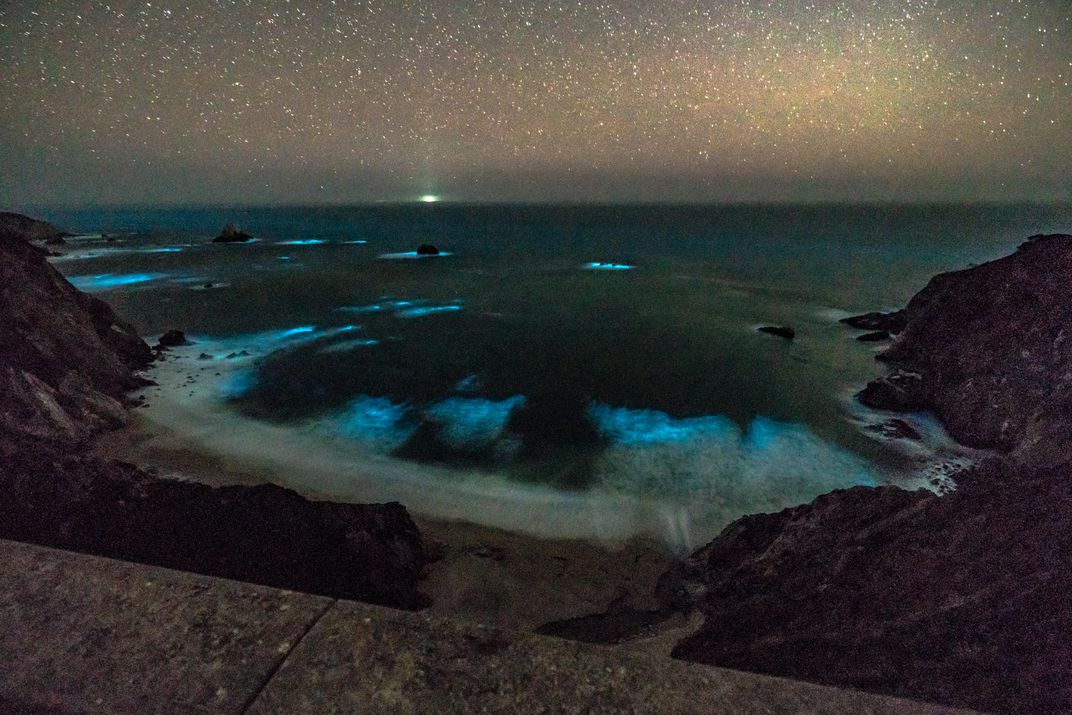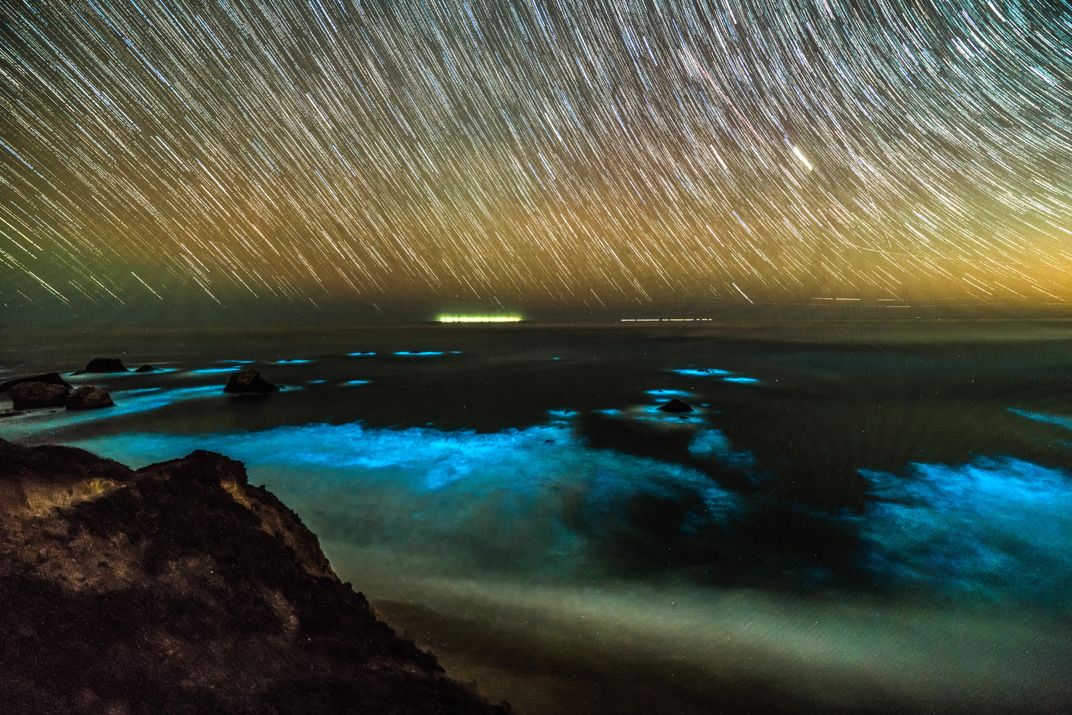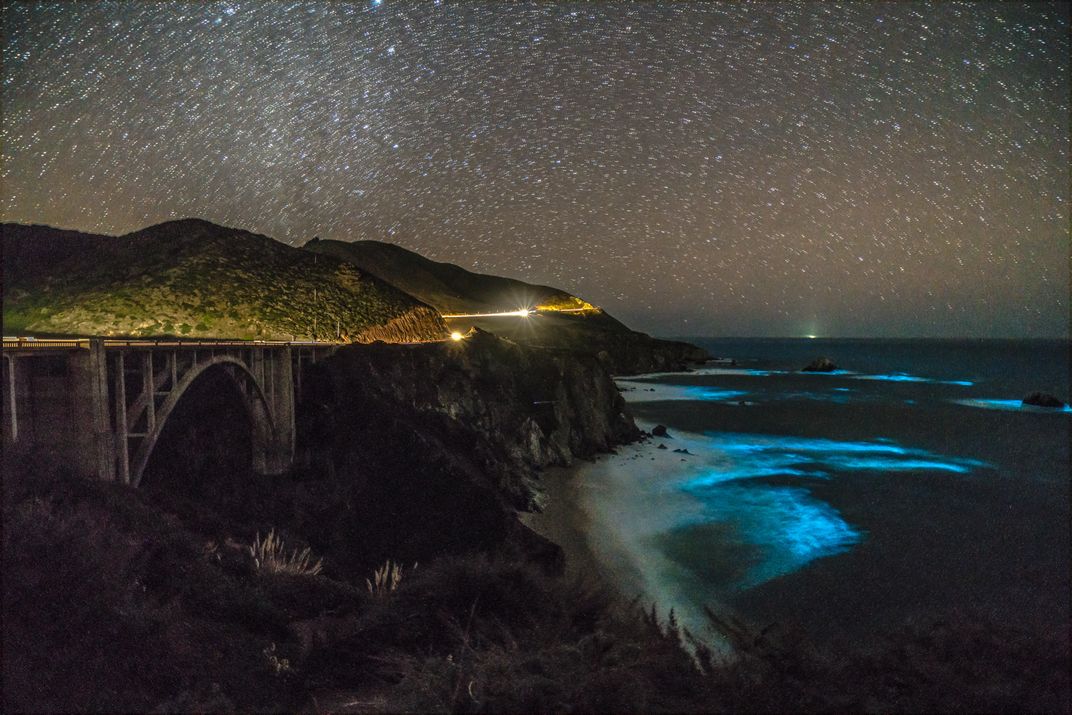The Story Behind Big Sur’s Glowing Waves
Photographer George Krieger captured the unusual scene in vivid detail
After suffering a devastating car crash in 2005, George Krieger took up photography as a form of physical therapy. A resident of California, he walks nearly every day along sandy beaches and rocky formations to snap pictures of the state’s beautiful coasts. Earlier this month, during a night-time photo walk near Bixby Bridge in Big Sur, Krieger noticed something very strange: the waves lapping up against the beach were glowing blue beneath the night sky.
“You know when car headlights hit the top of waves at the beach?” Krieger tells Smithsonian.com. “It looked kind of like that.”
But Krieger knew that no car driving over Bixby Bridge, which towers 260 feet above a canyon, could correctly angle its lights downwards in a way that would create such a glow. He also noticed that only certain places in the water were shining blue.
Krieger suspected that the miraculous sight might be caused by bioluminescence, a chemical reaction that allows living creatures to produce light. So he emailed Mark Siddall, a zoologist and curator at the American Museum of Natural History in New York, who explained that the glittering critters were dinoflagellates, a phytoplankton species found across the world’s oceans.
These tiny organisms emit light to startle predators and, some scientists think, to draw the attention of other creatures that eat the original predators. In high concentrations, flashing dinoflagellates can make the water glow.
Using long-exposure photography, Krieger was able to capture the glimmering waves in brilliant detail. He posted the resulting photos on his Facebook page, and word of Big Sur’s aquatic glow began to spread. Steve Haddock, a bioluminescence specialist at the Monterey Bay Aquarium Research Institute, subsequently confirmed to Amy Larson of the local media outlet KSBW that species counts in the area showed the “‘usual suspects’ of luminous species that we would expect to cause such a bloom.”
Reports of glowing waves along the coast of California had, in fact, been on the rise since January. High nutrient levels in the water and windless weather were the likely forces driving this phenomenon, according to Elaina Zachos of National Geographic. A long-standing high-pressure system prevented winds from blowing through California’s coasts, which in turn allowed layers of dinoflagellates to build up in the water.
Krieger says that in recent weeks, the area has experienced storms and the coasts are no longer glowing. But he is glad that he was on hand to capture the majesty of this rare phenomenon—not only so that people around the world can experience it, but also because taking complicated photographs is an important part of his therapy process.
“It's part of that focus and that release of my mind,” he says. “Being able to be there and see something cool and know exactly how to capture it—to have the right equipment, the right set up—it is awesome. It feels great to be able to share something that very few people get to see, and be able to capture it in a way that gives it the visual it deserves.”


